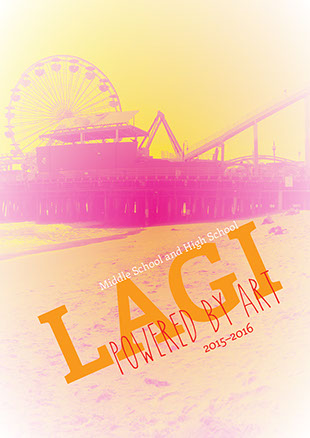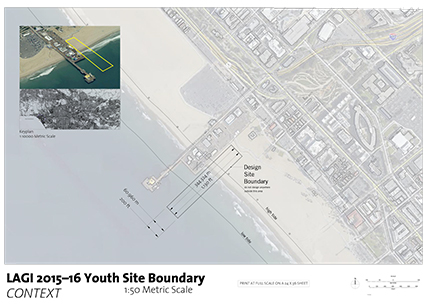THE CHALLENGE
Can renewable energy technologies become a part of the Santa Monica Pier experience? How can they generate electricity in a way that becomes a new popular attraction for the visitors to the Pier?
To answer these questions the City of Santa Monica is turning to you.
A 5+ acre area (226,000 square feet) next to the Pier has been identified as the site for an energy-generating installation that can help power the Pier in a way that is renewable and not harmful to the environment.
This is your challenge: Design a renewable energy installation that provides clean electricity to the Santa Monica Pier and that also fills visitors with a similar sense of wonder and excitement as do the other attractions at the Pier. Think about your renewable energy installation as a work of public art. There are no limits on what kind of technology you can incorporate into your artwork and few limits on your expression.
The only restrictions to your imagination are those listed in the Guidelines below.
We recommend that you take advantage of our LAGI Toolkit, which provides activities, education, and inspiration to spark your imagination. It will lead you step-by-step through the design process so that you will arrive at the end with a complete and qualified LAGI 2015–2016 Youth Design Prize submission.
Using the Toolkit is not a requirement for entering a submission to the Youth Prize.
THE CONTEXT
The people of Santa Monica care deeply about the environment. Protecting nature informs every decision that the City makes, and they are setting a strong example for other cities on issues such as waste management, sustainable development, stormwater harvesting, and green building.
On October 23rd, 1998 the Pacific Wheel at the Santa Monica Pier installed solar panels setting the Pier down a sustainable path. Almost two decades later, the solar panels continue to reduce the carbon footprint of the park.
Inspired by this success story, LAGI invites you to help the City of Santa Monica power more of the Pier with renewable energy. This will mean providing clean electricity to the Carousel and to other Pacific Park amusement rides and concessions.
To generate that much electricity will take more space than the approximately 1,500 square feet of panels that power the Pacific Wheel lighting. How can the energy generation technology become a part of the park itself? Will the power come from solar energy, wind energy, or a combination of both? Can the ocean waves and tide be a source of energy?
GUIDELINES (What to do)
In order to be eligible to win, your entry to the
LAGI 2015–2016 Youth Design Prize must clearly show us that you’ve addressed all of the four items listed here.1.
Your proposal for an artwork must be designed as a three dimensional form that includes at least one kind of renewable energy technology. In your written description tell us what technology you’ve integrated and why.
2.
How will your artwork fit onto the existing design site? How will people interact with it? Make sure that you show how big your artwork is (is it at the right scale?). In your sketches, write down some of the dimensions in feet or meters. Make sure that you haven’t gone outside of the site boundary line!3.
Develop a message that you want to communicate to the people who will come to see your artwork (this is sometimes called the “concept”). Your message or concept can be absolutely anything you can imagine. Tell us about it in your written description.
4.
How will your artwork relate to the natural world? Think about where the materials came from that you would use to build your full-scale artwork. Does your artwork disturb habitat of any animals, birds, or insects? Or does it provide new homes for wild creatures? Put some of these thoughts down in your written description.DOWNLOAD ALL DESIGN SITE DRAWINGS
What's the context? Where are you designing for?
These drawings define the site on which your public artwork should be designed. Each PDF contains multiple pages and gives you the option to print on large format (24x36 or A1 paper) or on smaller format (11x17 or A3 paper).Use the drawings to draw over or use tracing paper to sketch on them.
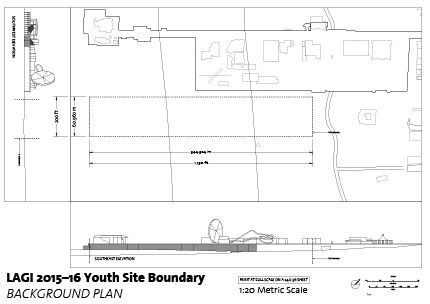
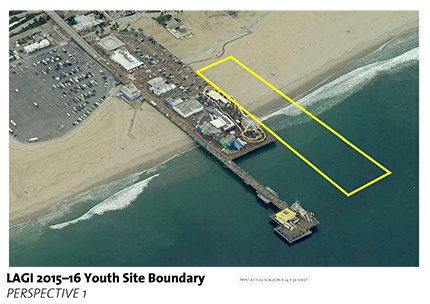
PHOTOS OF THE DESIGN SITE (The artist's canvas!)
CLICK HERE TO DOWNLOAD SEVERAL PHOTOS OF THE DESIGN SITE (102 MB).
YOU CAN DRAW ON THEM, make models on top of them, or place your design into them using computer software.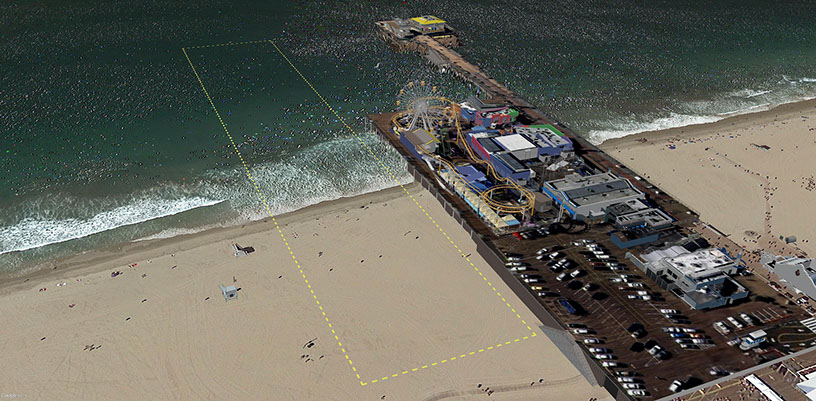
You’ll be designing your artwork for the space within the dashed line—the beach area and coastal waters next to the Santa Monica Pier. It’s a vibrant place where people come to play, listen to live music, relax, and enjoy the natural world.
DOWNLOAD CAD DRAWINGS (Optional download)
CLICK HERE TO DOWNLOAD THE CAD drawing (DWG format) of the design site (107 MB).
If you have a program such as AutoCAD, Sketchup, or any other 2D or 3D drafting/modeling software, and you'd like to produce your design drawings on the computer, this file will be very useful.Please don't forget to put your early ideas down on paper by hand first! Sketching with paper is still the best way to generate concepts quickly and loosely, which is a very important part of the design process. Refer to the Toolkit for more information.
If you don't have access to computer software for drafting or modeling, that's OK! The greatest artists and architects throughout history didn't either. The selection process will not favor computer renderings over hand drawings.
FINAL ENTRY REQUIREMENTS (What you'll upload to this website)
1.
One JPG image that explains how your proposal works.
This could be a plan, section, elevation, detail diagram, or a graphic layout that includes a combination of these.
Name the file:title of artwork_001.jpg
For example, if your project was titled
Solar Hourglass, the file name would be:
solarhourglass_001.jpg
2.
One JPG rendering, perspective drawing, or photograph of your prototype that shows what it would be like to experience your proposal, either from a distance or from within the artwork.
Name the file:title of artwork_002.jpg
3.
One more JPG image of your choice. This could be another rendering, or another diagram.
Name the file:title of artwork_003.jpg
4.
One text description of your idea and artistic concept (maximum 800 words)
Name the file:title of artwork_text.doc
*JPG images should be between 3Mb and 15Mb. Please do not exceed 20Mb for any one image.
IMPORTANT DATES
August 15, 2015
Competition opens
May 15, 2016
Competition closes
Submissions will be accepted until May 15, 2016 at 23:59 (11:59pm) GMT.
October 2016
Award ceremony in LAPRIZE INFORMATION
$3,000 USD in prize money will be awarded by the Selection Committee to one Middle School Entrant.
$3,000 USD in prize money will be awarded by the Selection Committee to one High School Entrant.
All submissions will be in exhibitions, online portfolio, and in a printed publication.MEETS THESE ACADEMIC PRACTICES
- Critical thinking and problem solving
- Using math for data collection and analysis
- Attention to detail
- Make sense of problems and persevere in solving them
- Use appropriate tools strategically
- Integrate the engineering design process
- Integrate STEAM (Science, Technology, Engineering, Art/Design, Math)
- Collaboration and team building
OBJECTIVES
- Examine and comprehend interdisciplinary information about public art and energy generation
- Identify, describe, and analyze the ways in which electricity is generated and consumed
- Learn about energy conservation
- Learn about different types of energy generation technologies
- Apply aesthetic decisions pertaining to color, line, and form in the conceptualization of new machines for energy generation
- Understand the difference between peak capacity and productive output for different renewable energy technologies
- Apply capacity factor to determine estimated annual outputs based on nameplate capacity
- Successfully guide students through the design and engineering process in order to conceptualize an artwork that utilizes renewable energy technologies
COMMON CORE ALIGNMENT (For U.S. based educators)
Download this PDF to learn how the LAGI Youth Prize aligns with Common Core Standards.


